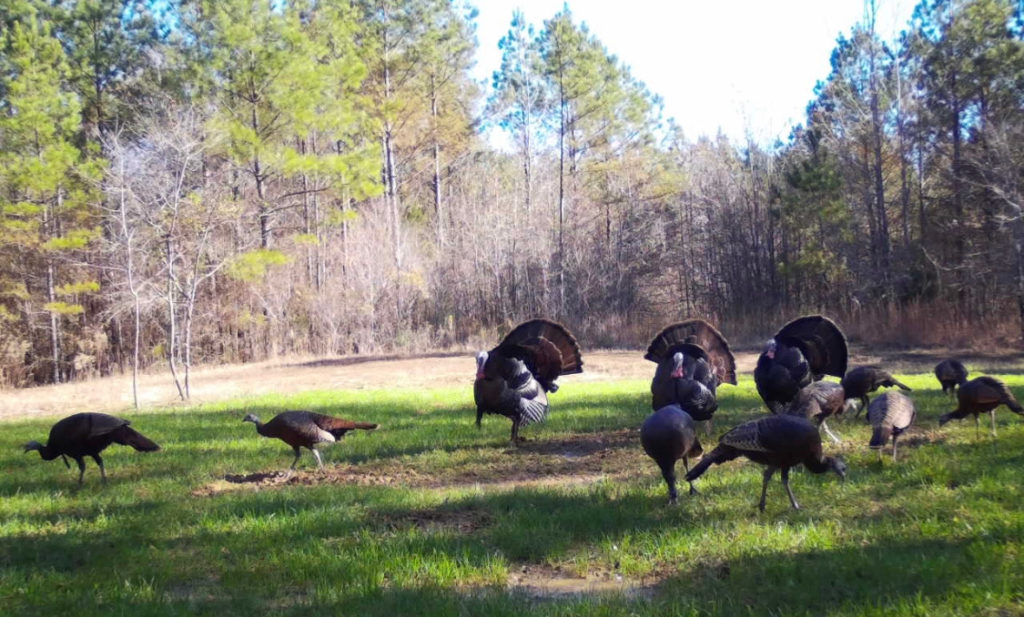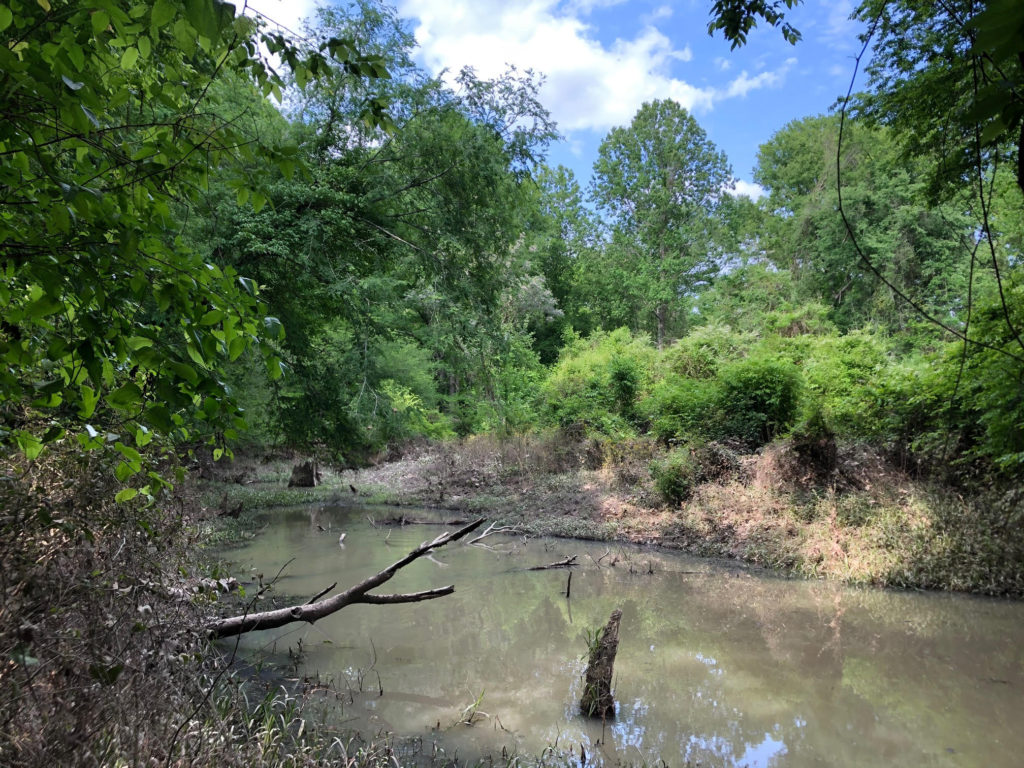You’ve finally purchased the perfect hunting property and now it’s all about enticing game to your home-away-from-home! How do you attract more turkeys and how do you hold more turkeys on your property? Backwoods Land experts are here to share insider tips on attracting turkeys in order to get them set in your sights.
It comes down to the usual equation of food, water, and shelter. It may sound pretty basic but truth be told, in turkey-land not all food, cover, and water are equal! It’s all about the magical combination of providing avenues of travel around your property, offering the best food to attract turkeys, and giving turkeys the nesting cover they want. This is all the encouragement they need to stick around long enough for the hunt!

1.Turkey Friendly Food Plots
Just as with most living organisms, the best way to increase wild turkeys on land is with good food! What is the best food to attract turkeys? Establishing food plots that give turkeys an alternative to foraging will improve turkey numbers on your property. These food plots should be near mast-bearing trees, where turkeys go to forage. The magic number is one half-acre food plot for every 25 acres of timber. The best food plots for turkeys should have lanes dug for easy bugging and could have corn, soybean, oats, wheat, grapes, and berries.
2. Turkey Nesting Cover
One of the best tips for improving turkey numbers on your property is to provide them with the best nesting opportunities. Turkeys tend to reproduce in the same area, which is wherever they consider home! How do you make your land a turkey home turf? Hens will naturally search for the protection that understory vegetation provides but it can’t be too thick. Turkeys tend to enjoy a loose leaf litter where they can easily forage close to the nest. To increase the right kind of vegetation like briars and dewberry, you’ll want to thin out your trees to enable the best mast-producing, mature roosting trees to thrive.
3. Water

Turkeys need a natural water source for their drinking and digestive needs. Their bodies rely on ingesting grit and gravel for proper digestion. Additionally, the water source attracts insects and grows natural greenery. While you want the seep, spring, or pond to be as natural as possible, it’s still important to clear out shrubs and keep the edges of the water holes open for visibility and access.
4. Keep Turkey Predators Away
Predators that frequent your land discourage turkey numbers, plain and simple. Their home turf needs to feel safe and accessible, especially for nesting. You can take any number of precautions to discourage predators from hunting on your property, such as fencing, repellents, consistent trapping, etc.
5. Discing
Turkeys survive on foraging and by creating the most nutritious foraging opportunities, you’ll draw more turkeys to your land. You can accomplish this by tilling the soil shallowly, which is known as discing. This encourages the growth of native grasses and forbs which are a favorite of wild turkeys.
6. Best Mowing Practices for More Turkey
Mowing for turkeys is all about knowing where to hold off and when to start up! Mowing should be focused on outer property roads and older fields in order to disperse the seeds of and kill off older grasses. However, edges of fields and more recent fields should be left alone so that as the young turkeys forage for insects, they’ll naturally disperse the seeds from newer grasses.
7. Keeping Turkeys Healthy
Promoting turkey health and preventing illness is another aspect of encouraging turkey numbers on land. Turkeys take “dust baths” to remove unwanted travels and parasites from their feathers. If you provide disk strips for these baths along the edges of your field, you are providing an important method of controlling external parasites.
8. Increase Turkey Numbers with Controlled Burning
Prescribed burning is an effective tool for controlling your habitat for turkeys. This encourages the growth of grasses, forbs, and seed banks, as well as replenishes the soil and insect counts. An additional benefit is that it burns off excess and unwanted vegetation.
9. Best Mast Production
Plant the best trees and shrubs to attract turkeys and other wildlife at various intervals throughout the year. Between your food plots and varying fruit and nut dropping, you’ll have year-round food for turkeys, which is especially important for the winter months. If about 20% of your woodland includes apples, plums, pecans, crabapples, and soft-mast brushes like blueberries and huckleberries, you’ll see your turkey numbers steadily rise and maintain. Turkeys also prefer dogwood, wild beech, and hickory.
10. Clear Cutting for Turkey Travel
Turkeys can cover a ton of land, especially when foraging in their youth. They prefer open grasslands with brush to forage and nest. To increase turkey numbers on your land, clear-cut patches throughout your property.
